Why we prune:
- Encourage new growth.
- Optimize bloom potential.
- To shape.
- Remove dead, diseased, or unproductive canes.
- Increase airflow to the inside of the plant, reducing the risk of fungal diseases.
How to cut:
When cutting stems always cut about ¼” above an outward facing bud. Pay attention to which way the bud is facing because that is the direction the new branch will grow. Do not cut more than ¼” above the leaf bud because this will leave a stub that will die back and look unsightly. Cut should be made at a 45° to 60° angle that angles up toward the bud.
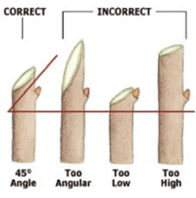 Image by: idiggreenacres.com
Image by: idiggreenacres.comThere are two types of cuts we can make on a plant when pruning. They are either heading cuts or thinning cuts.
Heading cuts – are made anywhere along a stem or branch and leave a stub. This type of cut leads to increased branching at the cut site.
Thinning Cuts – remove limbs all the way back to the next lateral branch and leave no stubs. This is often used to redirect growth or remove excessive branches.
When removing entire canes look for the branch collar on the remaining lower stem. If you make your cut flush with the lower stem the wound will not heal properly and is an opportunity for bugs and diseases to enter the stem.
 Image by: USDA
Image by: USDABasic Pruning
When pruning roses it is a good idea to start at the bottom and work your way up!
- Remove suckers beneath the bud union or any stems coming up through the soil. Bud unions will look like a knot in the trunk near the soil level. This only applies to grafted roses.
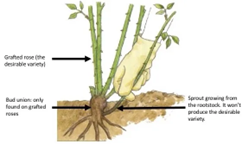 Image by: stalbertbotanicpark.com
Image by: stalbertbotanicpark.com- Remove the oldest, non-productive canes first. These will be grey and woody. Cut them back close to the base.
- Remove any twiggy stems less than the diameter of a pencil.
- Remove any dead or diseased canes.
- Remove crossing stems or any growing to the interior of the shrub.
- Remove about 1/2 – 1/3 of growth from the remaining canes.
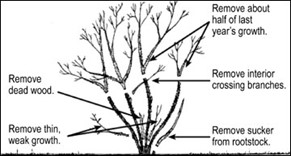 Image by: extension.missouri.edu
Image by: extension.missouri.eduPruning for specific types of Roses
In addition to the basic steps of pruning certain types of roses will benefit from some more specific treatment.
Hybrid Tea, Grandiflora and Floriibunda Roses:
Maintain three to six strong, healthy, and uniformly spaced canes. Remove overlapping interior growth to allow good air circulation and light saturation. Prune annually.
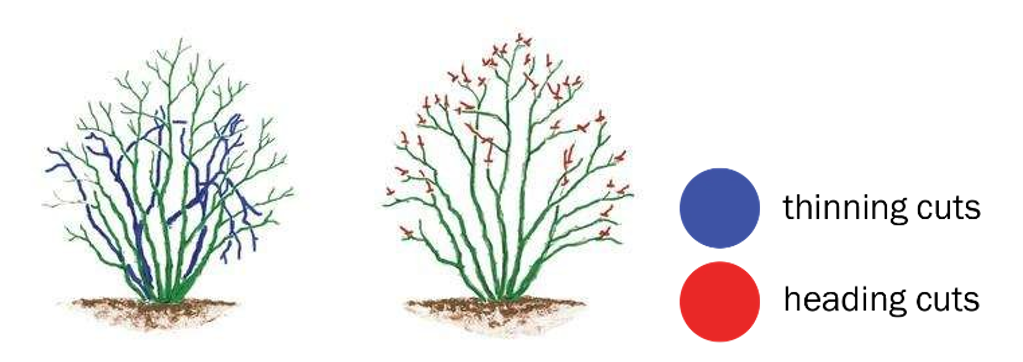 Image by: idiggreenacres.com
Image by: idiggreenacres.comShrubs and English Roses:
Maintain six to eight strong canes. Prune lightly during the first two years. As shrubs mature, remove twiggy old growth. Cut back the rose removing about one third of the shrub.
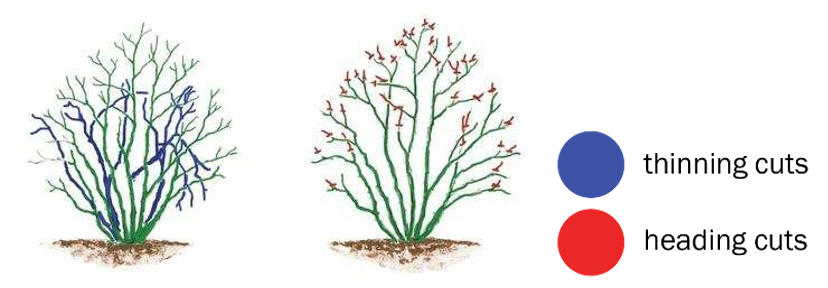 Image by: idiggreenacres.com
Image by: idiggreenacres.comTree Roses
Prune all canes above the graft to eight to twelve inches, or about half their length.
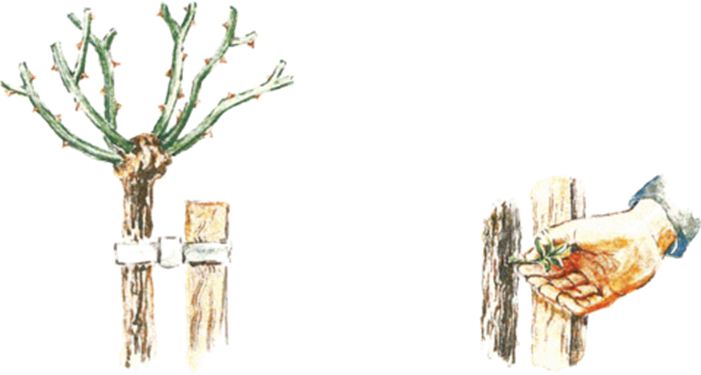 Image by: idiggreenacres.com
Image by: idiggreenacres.comMiniature and Groundcover Roses:
Prune to maintain shape only.
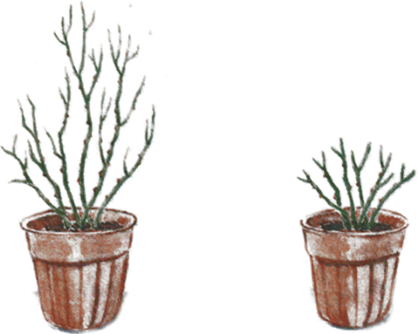 Image by: idiggreenacres.com
Image by: idiggreenacres.comClimbing Roses:
Don’t prune for the first two years unless you have dead or dying canes that need to be removed. Prune any side shoots (of the main structural canes) back by 2/3. Remove any weak twiggy stems. Remove any really old woody branches to the ground. As you are pruning identify new, strong stems that need to be tied to the trellis or other support structure.
 Image by: idiggreenacres.com
Image by: idiggreenacres.com